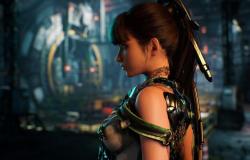The life cycle of Nintendo Switch is now coming to an end but the Japanese giant does not seem to have any intention of slowing down its exceptional production of exclusives, recently made up mainly of large re-editions of authentic pearls from its glorious past. It comes from that vault of precious gems that was the GameCube toy library Paper Mario – The Millennial Portal.
Developed by the legendary Japanese studio Intelligent Systems, creator of some of the most successful series within the Big N such as Fire Emblem, WarioWare and Advance Wars, the Paper Mario brand represents the direct descendant of Super Mario RPG: The Legend of the Seven Stars, a sort of spiritual sequel that inherits the role-playing declination and expands it from almost every point of view, while adopting a completely original visual style. We have experienced the first hours of this important restoration project of one of the most beloved exponents of the Cubo library and we are ready to tell you our preliminary impressions.
Welcome to Fannullopoli
Where its illustrious predecessor, Super Mario RPG, could count on extremely linear writing, simply aimed at giving players the pretext to embark on a new odyssey of the hero in dungarees, Paper Mario – The Millennial Portal boasts a much more complex plot full of twists and turns. In the prologue of the adventure, in fact, we are told the story of an ancient nameless kingdom that stood on the shores of the ocean and which, due to a devastating cataclysm, sank into the bowels of the earth and was largely erased by pages of history.
In its place, several hundred years later, Fannullopoli was built, a quiet port town which, it is said, hides a treasure of inestimable value. It is precisely here that we meet the iconic Princess Peach who, during one of her journeys, comes across an enigmatic figure who offers her to open a mysterious chest. After having accepted her and having come into possession of the Magic Map, fundamental for reaching the location of the mythical treasure, the reigning blonde is kidnapped (needless to say) and brought before the evil Giustignardo and his band of aliens known as the Incrociati. Shortly before being taken away, however, the Princess manages to send a letter to Mario with the precious Map attached and invites him to join her in this peculiar seaside village. Once he arrives on site and discovers yet another disappearance of his beloved Peach, the brave (former) Italian plumber sets out on her trail, attempting to solve the enigma of the Magic Map with the collaboration of some new characters such as the daring Goombella and the wise Dr. Goombastein. Soon, therefore, Mario and his new friends will have to embark on a tortuous journey in search of the elusive Star Gems which, according to legend, will allow them to break the seal on the Millenary Portal, an imposing passage that has lain for centuries in the depths of Fannullopoli.
Although we are talking about a title with twenty years of history behind it which, at least from what we have seen so far, does not seem to have undergone any changes whatsoever in terms of the script, we prefer not to delve further into the story to leave the flavor of the story intact. discovery. We can tell you, however, that despite the two decades that have passed, the narrative structure of Paper Mario – The Millennial Portal seems to have retained all its charm, thanks to a slightly more complex writing than the average of other adventures starring Super Mario and an absolutely irresistible cast of characters.
A bit like what happened in Super Mario RPG (check out our review of Super Mario RPG Remake), in fact, even the supporting characters who support the heroic Nintendo mascot during this campaign they are graced by a pleasant character design as well as permeated by a delightful sense of humor that will make you more than just smile half-heartedly. We still don’t know if Intelligent Systems has decided to retouch some aspects of the plot in the most advanced portion of the adventure but, at least for now, it seems that this remake operation has limited itself to modernizing the aesthetic sector while leaving the other ingredients of the story almost completely unchanged. recipe.
The role-playing soul of Super Mario
From a playful point of view, as we mentioned at the beginning, the Paper Mario series offers an enhanced and improved version of the game structure appreciated in the recent remake of Super Mario RPG, with some substantial innovations especially in the exploration phases. Unlike its progenitor which adopted an isometric camera to enhance the futuristic 3D-like game world, this chapter of Paper Mario opts for a three-dimensional setting of the environments in which characters drawn in 2D move, almost as if they were cut out of sheets of cardboard.


This brilliant intuition opened the doors to one myriad of gameplay solutions capable of infusing greater variety into the practice of navigating the scenarios: There are ‘curses’ that allow Mario to transform into a paper airplane to fly short distances or to position himself sideways so as to pass through narrow cracks in walls, to give some examples. The unique abilities of each of the traveling companions further expand the range of options available to players to solve the puzzles, with allies capable of throwing turtle shells to activate otherwise unreachable buttons or emitting powerful gusts of wind to even radically change the layout of objects in the environment. The sensation, when exploring the worlds of Paper Mario – The Millennial Portal is that of finding yourself in the presence of a colorful pop-up book whose pages hide dozens of secrets just waiting to be discovered.
Forget, therefore, the extremely guided layout of the Super Mario RPG maps: this iteration of Paper Mario, while maintaining a certain underlying linearity, includes a notable amount of branches, secondary activities and secret areas hidden in every corner of the world.

Even the battle sequences, deeply rooted in the tradition of Japanese turn-based role-playing games, show off a multitude of precious features specifically designed to make the experience more varied. Here we find the tight alternation between attack and defense situations enriched by the presence of the so-called Action Commands, a gameplay foundation that requires you to perform certain inputs to multiply the outgoing damage or eliminate the incoming damage.
To give you an idea, Mario’s main attack, jumping, requires pressing the A button in rhythm with the impact on the opponents’ bodies to double its effectiveness while the hammer blows must be accentuated with the movement of the left stick with the right timing.

Furthermore, the nature of the enemies plays an essential role in reading the battles: flying creatures can only be hit by jumping attacks while those equipped with pointed armor or sharp bodies can only be damaged by using ranged techniques or blunt weapons. For this reason it will be necessary to carefully consider which of our troops to deploy on the field, in order to ensure that we always have a good advantage over the enemies. Even in this case, however, it is the same playful framework that had made the original Paper Mario – The Millenary Portal great, revived without any particularly significant innovations. After all, the formula created by Intelligent Systems twenty years ago is still fresh and functional.
Super Mario in papercraft
Finally, we arrive at the technical sector which, as usual, it’s the aspect of production that seems to have received the most amount of care. Although the sensational artistic direction that made the classic Paper Mario – the Millennial Portal for GameCube famous is still clearly visible, it is easy to see how the Japanese studio has tweaked the overall atmosphere.
The element that immediately catches the eye is the lighting of the various environments that we will find ourselves sifting through: thanks to the skilful use of light sources and shadows as well as the implementation of carefully designed two-dimensional models of the various characters, this new edition of The ‘Millennium Portal’ presents a setting that is in all respects comparable to a papercraft work that moves before our eyes.
Furthermore, the intelligent use of the camera to emphasize the entrance into buildings or the passage between one scenario and another, already present in the original, they guarantee the adventure a look that is, in no uncertain terms, enchanting. The music, for its part, has been completely rearranged but the game allows, through the purchase of a free item in one of the ingame shops, to also reproduce the musical accompaniment tested on the 2004 GameCube.






